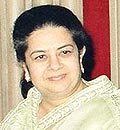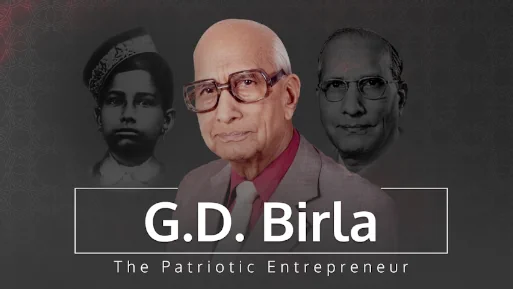More power to women
27 June, 2007 | Times of India
ShareRajashree Birla Director, Aditya Birla Group Times of India 27 June 2007
Even after nearly 60 years of Independence, India is still not liberated enough. Though India has today captured the attention of the world, and is among the fastest growing economies, deep-rooted ancient beliefs continue to dominate our lives.
 An overwhelming majority of Indians, rich or poor, long for a son because they believe that they can attain nirvana or go to heaven only when a son performs funeral rights. Yet another problem is that in our patriarchal social structure, barring Kerala, the family name is continued only through men.
An overwhelming majority of Indians, rich or poor, long for a son because they believe that they can attain nirvana or go to heaven only when a son performs funeral rights. Yet another problem is that in our patriarchal social structure, barring Kerala, the family name is continued only through men.
This again puts a premium on the male child. Sons are also regarded as a form of social security. So a daughter is never as welcome as a son. Then there are issues of dowry. Investing in the education of a girl child is perceived as something that has no return.
These socio-cultural factors constrain women, more so in the rural and semi-urban areas, besides reinforcing a negative self-image.
Collectively, this outdated way of thinking puts a severe brake on the progress of the girl child. The falling sex ratio is indeed a cause for concern. What is most disheartening is that since the late 1970s, with the coming in of the technology for sex determination, things have gotten worse. Even though this is regarded as a criminal offence, it is done surreptitiously. Surprisingly the most prosperous pockets have the most awful sex ratio.
Take Punjab for instance — 793 girls for every 1,000 boys against the national figure of 927. South Delhi has a ratio of 760 girls to 1,000 boys, whereas for Delhi as a whole it is 865. In Mumbai, it is an uninspiring 898. Such imbalances have severe consequences on the social fabric of our country.
It is, however, heartening that the government is trying to bring down barriers against girls in education through various schemes such as the Kasturba Gandhi Balika Vidyalaya. The scheme addresses the issue of gender disparities in rural areas and among disadvantaged communities. These residential schools for girls from underprivileged sections are indeed a breakthrough in the education of the girl child.
The protection and care of the girl child is a challenge that calls for a four-pronged strategy. First, there must be strict enforcement of the pre-conception and pre-natal diagnostic technologies (PCPNDT) Regulation and Prevention of Misuse Act. We must make sure that offenders do not get away. Government and NGOs could work in close collaboration to help implementation of the law. There is also a dire need for legal literacy.
Second, through advocacy we can build public opinion and work towards a mass movement for stopping the practice of sex s;election. We must express our absolute contempt and shame against such genocide. Punit Bedi, an obstetrician and specialist on foetal medicine, has said in a recent article, "More than 6 million female foetuses have been killed in 20 years. That is the number of Jews killed in the holocaust".
Third, enlist more women in all developmental programmes apart from education. Make them economically independent. Once they have disposable income, they will be seen in a different light. Today, a number of women are employed, but it is only the tip of the iceberg. This despite the government, through the national policy for the empowerment of women, endeavouring to c;reate an environment for the development of women.
Fourth, promote youth icons and role models such as Sania Mirza, Sunita Williams, Barkha Dutt, Kiran Mazumdar-Shaw, Kiran Bedi, Condoleezza Rice, Mallika Sarabhai, Indra Nooyi and Meeran Borwankar, to name just a few. They are all achievers and they are all women. While they come from urban India, there are hundreds of women who have done remarkable work for tribals and village women.
The point is that nothing is impossible for women. More and more women must realise this. This can happen by changing societal attitudes and community practices through active participation.






